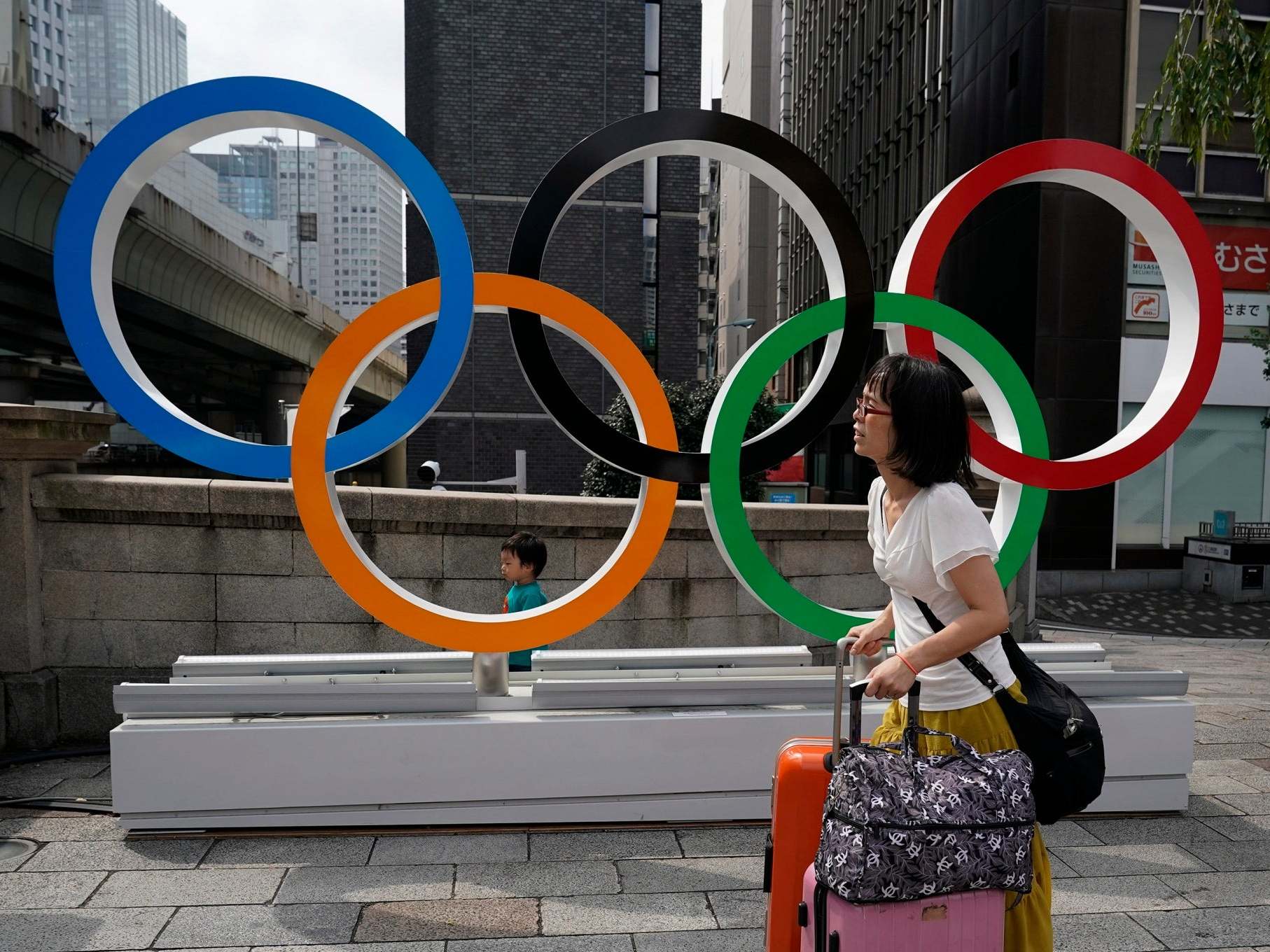Tokyo 2020: Radiation hot spots discovered at Olympics torch relay start
Greenpeace found that radiation levels around the recently refurbished venue

Your support helps us to tell the story
From reproductive rights to climate change to Big Tech, The Independent is on the ground when the story is developing. Whether it's investigating the financials of Elon Musk's pro-Trump PAC or producing our latest documentary, 'The A Word', which shines a light on the American women fighting for reproductive rights, we know how important it is to parse out the facts from the messaging.
At such a critical moment in US history, we need reporters on the ground. Your donation allows us to keep sending journalists to speak to both sides of the story.
The Independent is trusted by Americans across the entire political spectrum. And unlike many other quality news outlets, we choose not to lock Americans out of our reporting and analysis with paywalls. We believe quality journalism should be available to everyone, paid for by those who can afford it.
Your support makes all the difference.Radiation hot spots have been found at the J-Village sports facility in Fukushima where the Tokyo 2020 Olympic torch relay will begin, Greenpeace Japan said on Wednesday.
Greenpeace found that radiation levels around the recently refurbished venue, which also hosted the Argentina team during the Rugby World Cup earlier this year, were significantly higher than before the Fukushima Daiichi nuclear reactor meltdown following the March 2011 earthquake and tsunami.
Greenpeace's survey found radioactivity readings taken at J-Village on Oct. 26 as high as 71 microsieverts per hour at surface level.
People are exposed to natural radiation of 2,000-3,000 microsieverts a year, so anyone staying in the vicinity of J-Village for two or more days could be exposed to more than that.
These readings, although not deemed life-threatening if exposed for a short length of time, are 1,775 times higher than prior to the March 2011 disaster, according to the NGO.
The Olympic flame is due to arrive from Greece in Japan on March 20, with the torch relay officially starting from J-Village on March 26.
Greenpeace said in a statement that it had sent its findings to Japan's Ministry of Environment, but had received no response.
There is a risk that heavy rain will spread these higher levels of contamination on public roads, and thus re-contaminate already decontaminated surfaces," warned Greenpeace nuclear specialist Shaun Burnie, team leader of the J-Village survey, in a statement.
An ministry official acknowledged to Reuters on Wednesday that the ministry had been alerted to higher radiation level readings in an area surrounding J-Village and that decontamination measures had been taken.
"The ministry cooperated with related groups to decrease radiation levels in that area," said the official.
"On Dec. 3, Tokyo Electric Power (Tepco) took measures to decrease radiation levels in said area."
The Fukushima Daiichi nuclear station, located about 220 km (130 miles) northeast of Tokyo, was rocked by a magnitude 9.0 earthquake and subsequent tsunami in March 2011, sparking three reactor meltdowns.
More than 160,000 residents fled nearby towns in the aftermath as radiation from the reactors contaminated water, food and air. Greenpeace called on the Japanese government to conduct more extensive radiation surveys in the area and the NGO planned to return to J-Village soon to "determine if subsequent decontamination attempts have been adequately conducted."
Tokyo 2020 organisers could not be immediately reached for comment.
Worries that local food could be contaminated by the nuclear disaster has prompted plans by South Korea's Olympic committee to buy radiation detectors and ship homegrown ingredients to Japan for its athletes at the Tokyo Games.
Reuters
Join our commenting forum
Join thought-provoking conversations, follow other Independent readers and see their replies
Comments